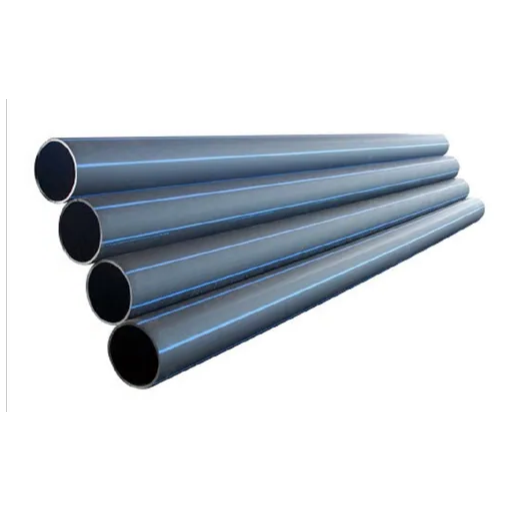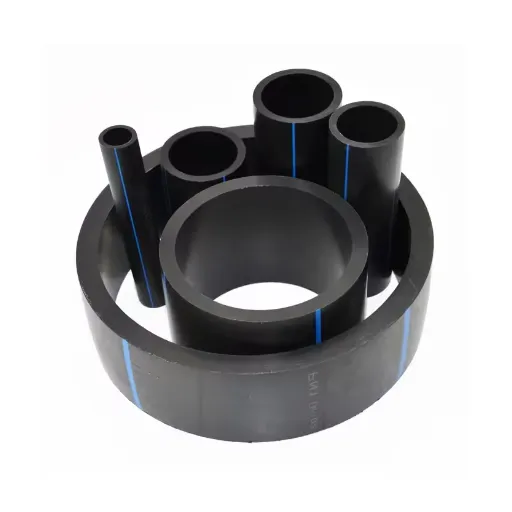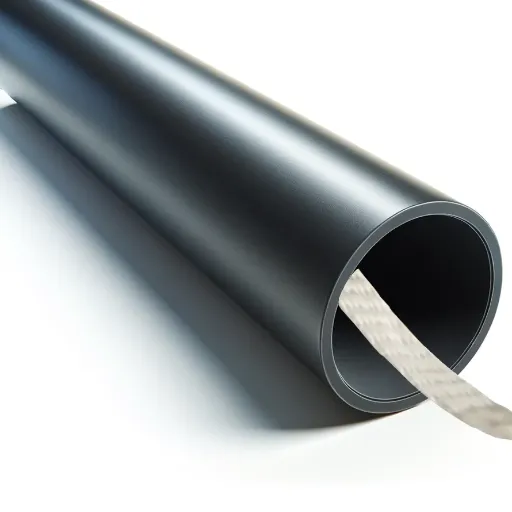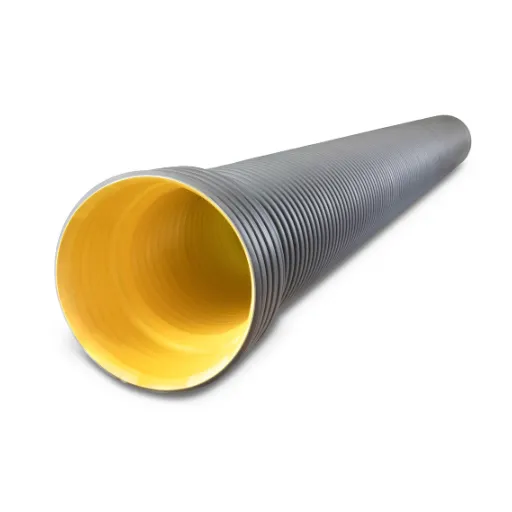High-density polyethylene (HDPE) pipes have become indispensable across multiple industries due to their durability, flexibility, and cost-efficiency. Selecting the correct pipe diameter is one of the most critical decisions in the design and implementation of an HDPE piping system, as it influences the flow capacity, operational efficiency, and cost-effectiveness of the project. This comprehensive guide aims to demystify HDPE pipe diameters by providing detailed insights into how they are measured, industry-standard sizes, and the factors to consider when choosing the right size for your specific application. Whether you are working on water distribution, sewage infrastructure, or industrial piping systems, this article will equip you with the technical knowledge needed to make informed decisions.
How do I select the right HDPE pipe diameter for my project?
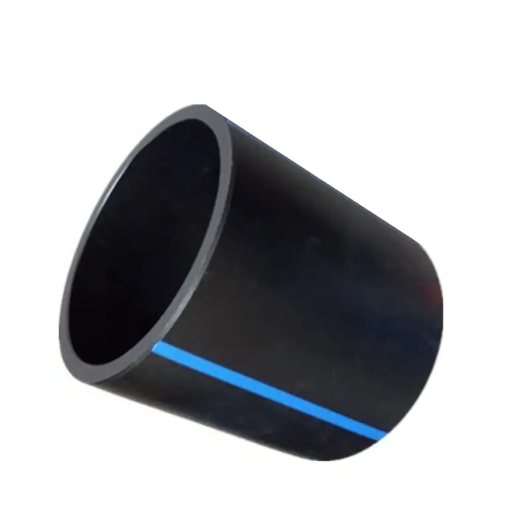
Factors to consider when choosing pipe dimensions
I consider several key aspects to make sure there is a smooth operation for the entire system when choosing the right diameter of an HDPE pipe. First, primary values that concern the flow rate requirements are determined, which correlate with the internal diameter of the pipe. For example, larger flows have to utilize larger pipes so that friction losses are mitigated. Second, I consider the working pressure of the system, ensuring the pipe’s pressure rating (PN rating) is adequate for the working pressure so that there are no issues with system failure due to over-pressuring. I also look into the type of fluid being conveyed, which can either be water, chemicals, or sewage, since this will also affect the degree of corrosion resistance and the overall compatibility of the pipe with the transport medium.
- Internal Diameter (ID): A specific flow rate must be supplied for the pipe to function properly, which can be estimated through the standard Hazen-Williams or Darcy-Weisbach equations.
- Pressure Rating (PN): The pressure that the system can meet is usually between PN10 to PN16 or higher for pipes that would be determined to be under high pressure.
- Temperature Range: The supported temperature for the fluid in conjunction with the surrounding environment should also be considered particularly with how HDPE performs at between -40°F to 140°F (-40°C to 60°C).
- Safety Factor: Due to the unpredictable operational conditions and spikes in performance I also include a safety precaution that is observed in most industries.
About project needs, I can always pick the correct pipe diameter at any point, and at the same time guarantee system reliability and performance, by critically reviewing the factors listed above.
Importance of pressure ratings and SDR in pipe selection
Files and piping systems contain several components, necessary for their proper functioning, including pressure ratings and SDR (Standard Dimension Ratio) of the pipes to be installed. The pressure rating denotes the highest level of internal pressure a pipe can tolerate under specific conditions. HDPE (high-density polyethylene) pipes, for example, use a classification system that indicates the pressure rating, such as PN10 or PN16, which reflects the maximum operational pressure that can be used in the pipe at 20°C.
SDR, meanwhile, is the ratio of the pipe’s outer diameter to its wall thickness. This system of rating is utilized in most areas where a lower SDR value allows for a higher thickness of the wall which means, in turn, higher resistance to pressure. For instance, pipes designated SDR11 have a thick wall about 30% more than pipes designated SDR 17. This makes it more suitable for use in applications that have higher operating pressures.
- Operating Pressure: The pipe pressure rating should be above the working pressure, taking into account surge events.
- Temperature Coefficient: The pressure rating should consider the operational temperature, for example, HDPE pipes should be derated for temperatures exceeding 20°C.
- Longevity of Operation: Consider stress from creep rupture and service life requirements for optimum performance.
Considering these aspects and complying with the appropriate requirements (for instance, ISO 4427 regarding HDPE pipes), enables the system to be dependable and efficient. In the same vein, accurate pipe specification reduces risk and increases operating economy in the future.
Matching pipe size to flow requirements
Flow Rate: Effective flow rate in liters per second or gallons per minute must be considered. This requirement sets a minimum threshold on the diameter to be used to avert restrictions on the flow. A greater flow rate, for example, will require a larger pipe diameter to keep the flow rate within the recommended limits.
- Velocity Threshold: To mitigate turbulence and abrasion as well as avoid sediment deposition within the pipeline, flow velocity must be kept within the range of 0.9 to 2.4 m/s (3 to 8 ft/s).
- Pressure Drop: While estimating the pressure loss on the length of the pipeline, I would take the average pressure drop in the pipeline into account. If the pipe diameter is small, more frictional losses will occur, thereby reducing the efficiency of the system.
- Material Properties: The internal settlement of materials being chosen, for example, HDPE having an HDPE internal roughness of 0.01 to 0.03 mm, must also be factored in as it affects the flow.
- Pipeline Length and Fittings: More fittings and longer pipelines lead to greater head loss. The allowance limits need to be checked before the problem is set up.
Analyzing each of these factors allows me to suggest the most suitable pipe size that meets the technical and operational needs of the system.
What are the key specifications for HDPE pipe diameters?
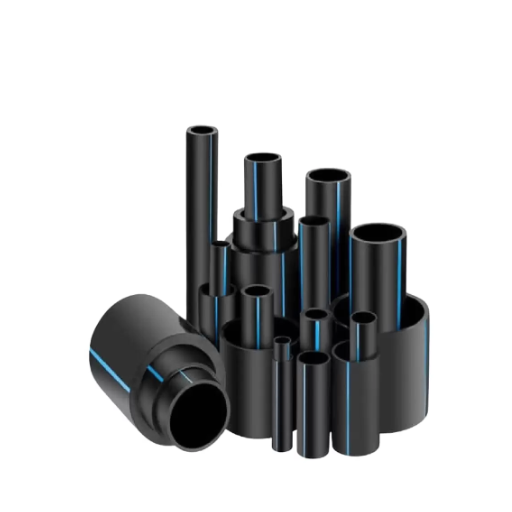
Inside diameter (ID) and its relevance in pipe selection
The inside diameter (ID) of an HDPE pipe is important because it affects how well a system can work in terms of flow rate, velocity, and overall system efficiency. The ID dictates how much fluid can flow through the pipe under certain circumstances, which is essential for calculating flow capacity. For instance, larger IDs diminish flow velocity for any discharge, thus reducing frictional losses. On the other hand, smaller IDs increase velocity, leading to energy losses, which can corrode the system over time.
- Flow Rate (Q): The volumetric flow rate in cubic meters per second depends on the pipe ID as well. It is expressed in cubic meters per second (m³/sec). It can best be defined as, Q = V × A where A is the cross-sectional area of a cylinder.
- Velocity (V): The magnitude of flow velocity is critical for system stability. It is also critical to note that flow velocity is inversely proportional to the ID for a constant flow rate. I must maintain proper design limits to reduce turbulence and abrasion.
- Friction Loss: Smaller IDs produce higher frictional losses. The losses from friction in the internal sectional are calculated by the Darcy-Weisbach equation considering pipe roughness and fluid characteristics.
There are three factors needed and must be based on operational requirements, these are efficiency, cost, and durability. Pipes must be selected in a balanced way ensuring that these operational requirements can be achieved.
ASTM standards for HDPE pipe dimensions
HDPE pipe standards for ASTM F714 and ASTM D3035 specify wall thickness, average outside diameter (OD), and standard dimension ratio (SDR), guaranteeing high pipe performance and consistency in construction. For example, ASTM F714 establishes requirements for the dimensions of polyethylene (PE) pipes based on their nominal pressure, while ASTM D3035 is concerned with dimension requirements for pipes of smaller diameters.
- Outside Diameter (OD): Depending on the standard, OD sizes range widely from 0.5 inches to 65 inches. Other sizes can accommodate custom applications.
- Wall thickness: Defined by an SDR which is the pipe OD to wall thickness ratio. Commonly used SDR values such as SDR 11 or SDR 17 directly affect the pipe’s pressure rating.
- Pressure Rating (PR): Set by the SDR and material classification. For instance, PE4710 material with greater PR capabilities under ASTM guidelines.
- Material Specification: Property of density, melt index, and others great for pipe design distinguish HDPE materials type under ASTM D3350.
These standards focus on enhancing the selection of HDPE pipes to meet specific technical criteria within operational, environmental, and durability constraints. Engineers can ensure efficient and accurate performance of the system by specifying pipe size by ASTM standards.
How do HDPE pipe sizes compare to other materials?
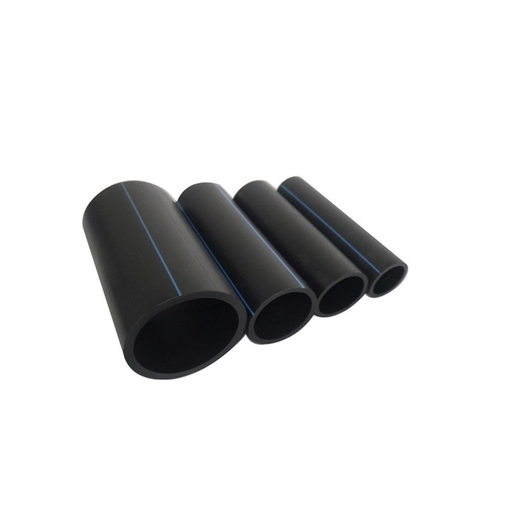
HDPE vs. PVC pipe size equivalents
It is important to understand that with regards to HDPE and PVC pipes, HDPE pipes have greater flexibility and durability which allows them to have a thicker wall. Because of this, the internal diameter (ID) measurements are affected. While both materials can achieve the same outer diameters (OD) for standard sizes, the working pressure and flow capacity differ because of wall thickness variations.
- Standard Dimension Ratio (SDR): HDPE pipes are built with SDR ratings (like SDR 11 or SDR 17) meaning the ratio between the pipe’s OD and wall thickness has a set standard. SDR ratings encapsulate lower pressure ratings due to higher SDR values. PVC pipes use this classification as well but tend to be more efficient than HDPE in regards to wall thickness of higher pressure ratings.
- Pressure Rating: The flexibility found in HDPE pipes makes it possible for them to withstand high pressure ratings which range between 63 and 160psi depending on the SDR. Schedule PVC pipes with higher specifications have less resistance to sudden loads or surge impacts but offer comparable pressure ratings.
- Flow Capacity (Hydraulic Performance): Because of high resistance to scaling or internal abrasion, HDPE pipes tend to have a smoother inner surface compared to PVC pipes. This greatly helps in maintaining flow rates. PVC pipes, on the other hand, while being initially smooth, are prone to rapid degrading under chemical or environmental stresses, leading to poor long-term hydraulic effectiveness.
- Thermal Expansion: HDPE thermal expansion coefficients are higher than PVC. Therefore, HDPE may require design modifications for size adjustments in environments with temperature fluctuations, while PVC is more dimensionally robust.
As a final takeaway, HDPE pipes are better at adapting to different environmental conditions and stresses. Conversely, PVC pipes are mainly used where load and use are lighter and where operational conditions are more rigid.
Comparing HDPE to steel and copper pipe dimensions
Multiple elements must be taken into account while analyzing the dimensions of an HDPE pipe against those of steel and copper pipes. These elements are wall thickness, pressure ratings, weight, and overall stability. Every material has its features designed for certain uses.
- Wall Thickness and Pressure Ratings: HDPE pipes are produced with specific dimension ratios (SDRs) which define the thickness of the wall in comparison to the diameter. Higher pressure requirements, which usually amount to 200 psi for water at 73 degrees Fahrenheit, can be accommodated by HDPE pipes with SDR 11. Steel and copper pipes on the other hand are classified by schedules such as Schedule 40, Schedule 80, etc. which are based on the wall thickness. Steel can sustain higher amounts of pressure, usually more than 2,000 psi due to its strength while copper pipes (Type K, L, M) are used with a pressure rating between 300-1000 psi depending on the type.
- Weight Comparisons: Copper pipes are in between both. HDPE pipes are significantly less dense than steel or copper which leads to a decrease in cost for transportation and installation. To give an example, a 2-inch HDPE pipe weighs 0.5 lb/ft in comparison to a steel pipe of the same nominal size which weighs 2.6 lb/ft.
- Dimensional Stability: Because of its flexibility and reduced corrosion rate, HDPE pipes perform suitably in most conditions with movement or chemical exposure. Nonetheless, HDPE pipes show considerable thermal expansion (coefficient ~1.5 – 2.0 x 10⁻⁴ in/in/°F). Steel and copper are more dimensionally stable, which makes them more resilient to other externally imposed temperature changes, but they are prone to scaling and corrosive erosion which can negatively impact their durability and functionality in corrosive surroundings.
These distinctions illustrate that HDPE pipes are preferred for applications requiring lightweight, corrosion-resistant, and flexible materials, while steel and copper pipes are better suited for high-pressure or temperature-sensitive installations.
What are the benefits of using different HDPE pipe diameters?
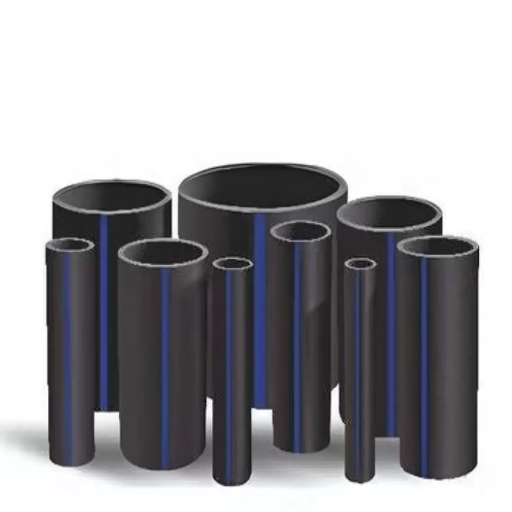
Advantages of larger diameter HDPE pipes
Larger diameter HDPE pipes offer numerous important benefits that are ideal for different uses. For one, they offer greater reserve capacity for pumping fluids or slurries which reduces the need for additional infrastructure or parallel piping systems. This is especially useful in the wastewater management, mining, and irrigation industries. The hydraulic properties of HDPE are further improved because of its Manning’s roughness coefficient which is approximately 0.009, meaning higher flows face less friction losses.
Larger-diameter HDPE pipes are more economical in transporting goods over long distances. Their light weight and flexibility make them easy to transport and install, even with diameters greater than 36 inches. This reduces overall labor and equipment expenses. Furthermore, they have excellent impact strength and can withstand dynamic loads and ground movement without losing their shape which is important for large installations.
In conclusion, larger diameters optimize the beneficial properties of HDPE such as chemical and corrosion resistance ensuring performance in aggressive or caustic environments. Because they can withstand standard conditions for more than 50 years, they serve as a dependable and low-maintenance answer to modern infrastructure challenges.
Applications for smaller-diameter HDPE pipes
Because of their outstanding flexibility, durability, and capability to bear great pressure in comparison to their size, smaller-diameter HDPE pipes are easily adaptable and are widely used in different industries. The typical applications are potable water distribution systems, natural gas pipes, irrigation systems, and conduits for cables. They are single-handedly most suited for residential use or small-scale commercial usage where sophisticated piping systems are not required.
- Pressure Rating: Restriction does not apply as HDPE pipes can allow up to 16 bars of pressure depending on the SDR. This makes them well-suited for similar applications.
- Flexibility: Their flexible nature greatly reduces the number of fittings required as they can be easily installed in highly congested areas.
- Diameter Range: Varied between 20 to 160 mm, these figures are ideal for situations that have low flow requirements.
- Chemical Resistance: They too, like the bigger cousins, are very chemical resistant ensuring durability in harsh conditions.
- Operating Temperature: They allow a temperature range of –40° C to 60° C making them usable in any climatic condition.
Smaller diameter HDPE pipes offer economical solutions for low-capacity targeted projects without sacrificing efficiency and long-term performance. Their specific features render them very useful in the contemporaneous world of infrastructure development.
Balancing cost and performance with pipe size selection
The project’s requirements must be handled with care to balance cost and efficiency when selecting pipe size. The reduced HDPE pipe diameter is exceptionally economical for projects with low flow rates because smaller projects utilize fewer resources for production, together with simplified installation in cramped conditions. However, their effectiveness greatly drops with high flow projects which require greater flow capacity that can be facilitated by larger pipe diameters.
- Flow Requirements: Always check if the anticipated efficiency can be supported with the expected flow volume.
- Chemical Resistance: Check the type of chemicals the pipes will be exposed to ensure the pipe material is suitable for long-term use.
- Operating Temperature: The pipe material must tolerate the expected environmental conditions (in this case HDPE pipes work from -40 degrees Celsius to 60 degrees Celsius).
- Durability and Longevity: To protect the pipe against wear and environmental harm while reducing operational and long-term maintenance costs.
Considering every factor allows for optimal allocation of budget and the desired effectiveness results for any infrastructure component.
Are there special considerations for metric HDPE pipe sizes?
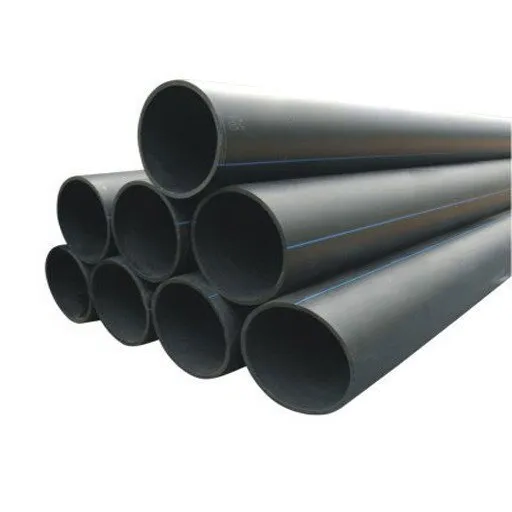
Converting between metric and imperial HDPE pipe dimensions
Switching between the metric and imperial measurements of HDPE pipes requires a conversant capture of technical specifications and measures for both systems. Pipes made of HDPE in metric format are usually measured using millimeters (outside diameter) while the imperial standard uses inches (nominal pipe size or NPS).
- Outside Diameter (OD): Pipes in metric are rated to provide the exact OD in millimeters, while the imperial pipes tend to refer to nominal sizing. Take for example a 110 mm metric pipe which will correlate with an imperial pipe rated at 4 inches NPS pipe with an actual OD of 114.3 mm.
- Wall Thickness (SDR or Schedule): The Standard Dimension Ratio (SDR) metric definition of pipes matches with imperial schedule definition in rating of pressure. As an example, SDR 11 pipe is often associated with Schedule 40 as both fit comparable sizes.
- Pressure Rating: Both frameworks have specifications on pressure capacity which is articulated as bars for metric and psi for imperial. For example, a 10-bar pipe is around equal to 145 psi.
- Material: Find out if the pipe density, thermal expansion, and so on are adequate for desired consistent performance regardless of the measurement system employed.
When looking over HDPE pipes, do not forget to refer to the pressure ratings and wall thicknesses in both metric and imperial systems, as they are relevant to the given project. For more sensitive uses, use material standards such as ISO 4427 and ASTM F714 for HDPE materials, which should ensure that there is no disparity.
International standards for metric HDPE pipe sizes
Observed worldwide, the metric HDPE pipe sizing has maintained the set standards which maintain compatibility and uniformity across different countries and sectors. Some of the recognized standards are:
- ISO 4427: This standard relates to polyethylene (PE) pipes and fittings used in water supply systems and details their size, mechanical properties, and performance criteria for applications under pressure.
- DIN 8074/8075: In Europe, these standards are rather common. They describe in detail polyethylene pipes’ specifications, especially their dimensions and pressure ratings.
- ISO 4437: This refers to the specific characteristics of creep strength and environmental stress cracking resistance of polyethylene pipes used in gas supply systems.
- AS/NZS 4130: This standard is used in Australia and New Zealand and incorporates requirements for PE pipes used in water systems and gas systems ensuring satisfactory performance under normal operating conditions.
By observing these standards, you can assess compatibility and confirm that the HDPE system meets the project-specific requirements.
Reference sources
Frequently Asked Questions (FAQs)
Q: What is HDPE pipe and what are its common applications?
A: HDPE (High-Density Polyethylene) pipe is a versatile polyethylene pipe used for various applications such as gas distribution, sewer systems, and drainage systems. Its durability and flexibility make it suitable for a wide range of projects, and it’s available in a variety of sizes to suit different needs.
Q: How can I determine the right HDPE pipe size for my project?
A: To determine the right HDPE pipe size, consult an HDPE pipe size chart or specifications guide. Consider factors such as the required inside diameter, flow rate, and pressure class ratings. Our experts can help you tailor the perfect size for your specific application.
Q: What is the range of pipe sizes available for HDPE pipes?
A: HDPE pipes are available in a wide range of sizes, typically ranging from 1/2 inch to 2000mm in diameter. The size chart includes both IPS (Iron Pipe Size) and DIPS (Ductile Iron Pipe Size) options, with DIPS sizes ranging from 4 to 36 inches being common for larger applications.
Q: How are HDPE pipe sizes measured?
A: HDPE pipe sizes are measured by their outside diameter (OD). The actual inside diameter may vary depending on the pipe’s wall thickness, which is determined by the Standard Dimensional Ratio (SDR) or the pressure rating of the pipe.
Q: What is SDR about HDPE pipe sizing?
A: SDR stands for Standard Dimensional Ratio, which is the ratio of the pipe’s outside diameter to its minimum wall thickness. Lower SDR numbers indicate thicker walls and higher pressure ratings. SDR is crucial in determining the pipe’s strength and suitability for specific applications.
Q: Are HDPE pipe fittings available in the same sizes as the pipes?
A: Yes, HDPE pipe fittings are typically available in sizes that correspond to the pipe sizes. This ensures compatibility and ease of installation. Our comprehensive range includes fittings for various connection types and applications.
Q: How do HDPE pipe sizes compare to other pipe materials like copper?
A: HDPE pipe sizes may differ from other materials like Copper Tubing Size (CTS). While HDPE pipes are measured by outside diameter, some other materials are measured by inside diameter. It’s important to use the correct size chart and specifications guide when comparing or replacing pipes of different materials.
Q: Can HDPE pipes be custom-sized for specific projects?
A: Yes, HDPE pipes can be custom-manufactured to meet specific project requirements. This flexibility allows for tailored solutions in unique applications where standard sizes may not be suitable. Consult with our experts to discuss custom sizing options for your project.



